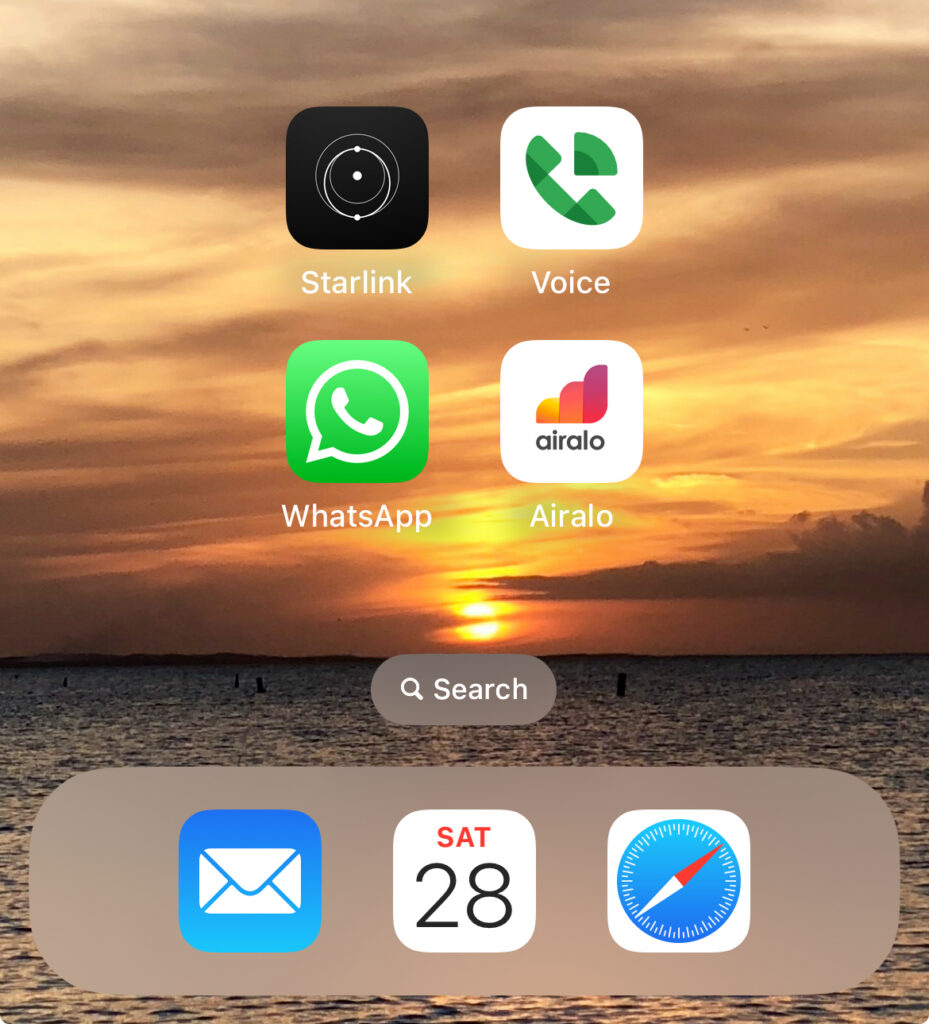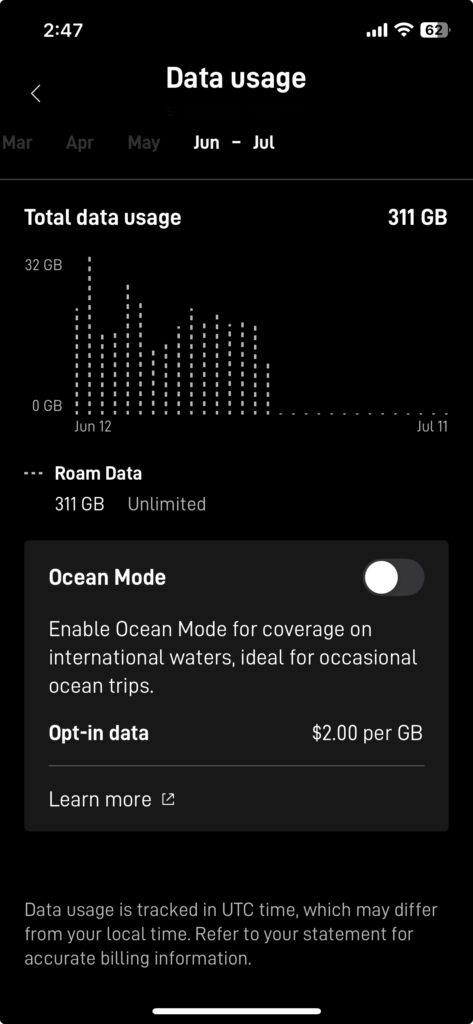Google Voice, WhatsApp, Airalo eSIMs, and of course, Starlink

While living in Miami, we each had our iPhones and an AT&T unlimited voice and data family plan, but as we were moving abroad, and aboard our newly purchased sailing yacht, we began to think about mobile phones and the best possible, and least expensive way to handle our needs going forward.
Of course, we could have gone with one of the big three US carriers, as they each offer some level of international service bundles but they’re all in the neighborhood of $100+ per month, per device. I thought there had to be a less expensive solution and hopefully one without too many compromises. Here’s what has worked for us so far, both in Spain and France (Mediterranean) and now throughout the Caribbean, and best of all at a mere fraction of what it would have cost with the big three carriers.
Here’s a summary of what we did, followed by some of the details behind each decision.
- Opened Google Voice (VOIP, SMS) accounts, installed their mobile app, and ported our cellphone numbers over to them
- Cancelled our AT&T plans
- Installed WhatsApp mobile and desktop apps and suggested everyone use it as the primary means of communications with us going forward
- Got Starlink (Satellite Internet – this link gets both of us a free month!) on the boat
- Installed Airalo (eSIM app – use code “ROBERT84206” for $3 off your first purchase) to purchase data minutes right on my phone (no hunting for physical SIM card data refills at each port)
The Google Voice app and account/service are free (at least at the time of this writing) other than the data required make and receive voice over IP (VOIP) calls, allows for making outbound calls on the regular phone network, mostly free to the US/CAN, and nominal per minute rates elsewhere, and it has some useful and clever features you can explore further here.
You get a phone number when you join, but the interesting thing is that you can port your current mobile phone number to it as if it were a regular carrier so friends and family can call you as normal. The one caveat here is that for some rare purposes, like Zelle payments, you will no longer be able to use your phone number. I now use my email address for Zelle instead. On another occasion I had to authenticate myself to Microsoft for Azure Cloud services, and they refused the VOIP service, so I had them send the verification code to a friend’s phone and he relayed it to me via text message… problem solved! Probably the biggest shortcoming is that it only supports basic SMS text messaging, which brings me to WhatsApp!
WhatsApp is an end-to-end encrypted voice/video/text chat app that supports groups, both public and private, has mobile and desktop versions, and is widely used by the cruising community and even many businesses around the world. There are good alternatives, like Signal and Telegram, but they don’t seem to be as widely adopted.
Starlink (this link gets both of us a free month!) is of course a no-brainer for the live-aboard cruiser. The residential unlimited plan works within 12 miles of shore, where we spend 99% of our time, pretty much anywhere around the world, and can be temporarily up-serviced to ocean mode for a few dollars a GB when needed for crossings. It is surprisingly affordable, especially given that there’s no viable alternative. You can get other satellite services for weather, short text and position tracking; we have Garmin In-Reach as an emergency backup, but they don’t provide the unlimited high-speed broadband Internet connectivity that most people desire, if not require, nowadays.
The last piece of the puzzle is what to do about wireless data for your mobile devices when away from your boat’s Wi-Fi? Traditionally this required cruisers to hunt for the local SIM chip provider and purchase a pre-paid, set amount of data in GB. Once the SIM chip is empty, or if you leave the service area, you repeat the process and get another. There’s a much better way now by using eSIM functionality. This functionality started becoming available in mobile devices around 2017-2018, depending on platform and manufacturer. Basically, you install an eSIM app from your platform’s app store app, there are a bunch of them, all they do is resell data from the major carriers, so probably not too important which on you use; we use Airalo (use code “ROBERT84206” for $3 off your first purchase) and have not had any issues. You can purchase for most any individual country, region, or even global plans. When the data runs out you simply buy another package. You can even set it to auto-renew if you like.
Screenshots from Airalo and the Starlink app, below:


Tell us what you think!
